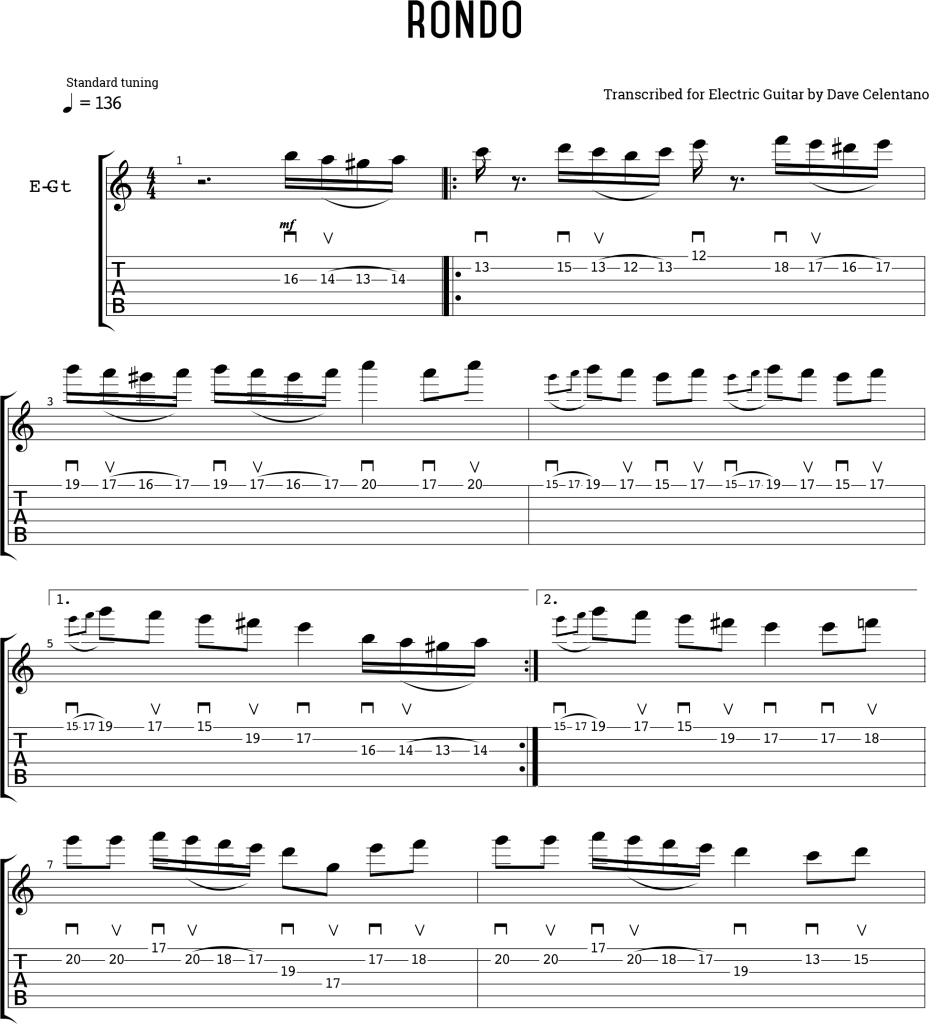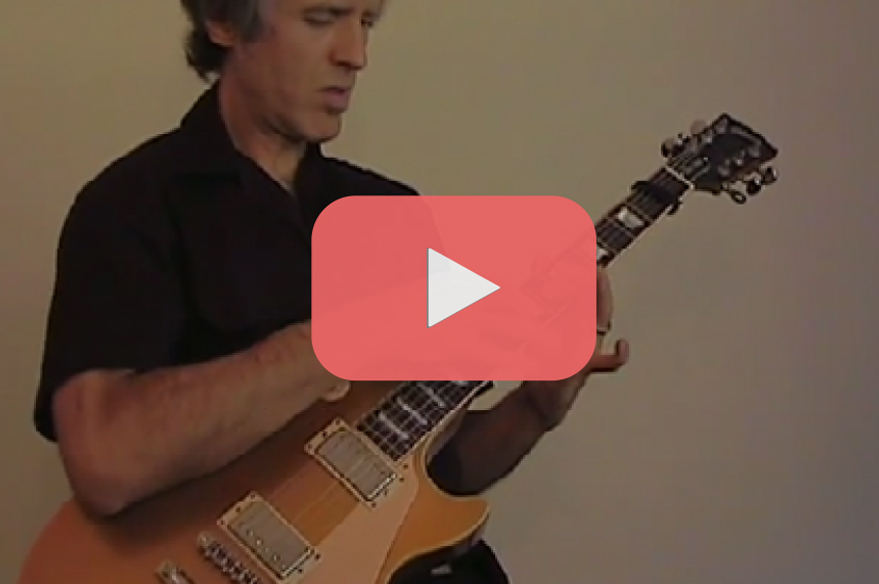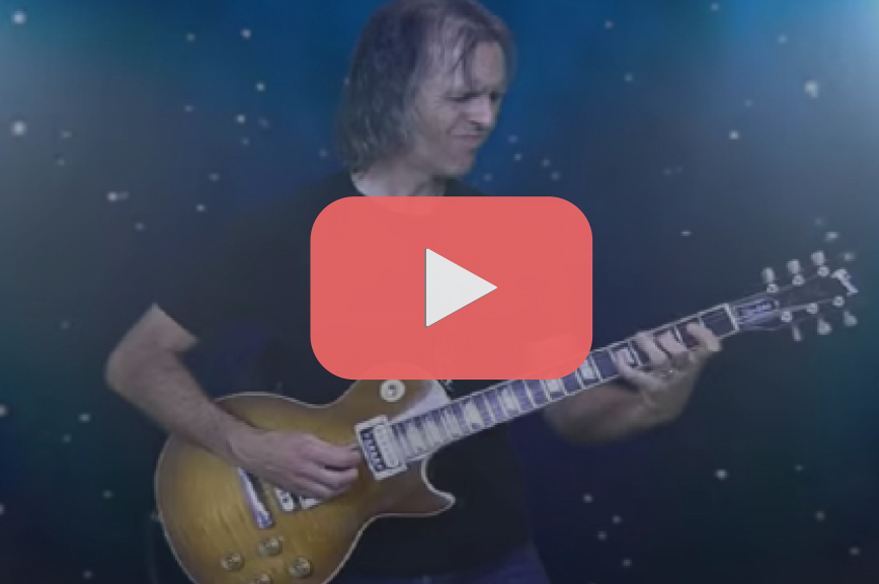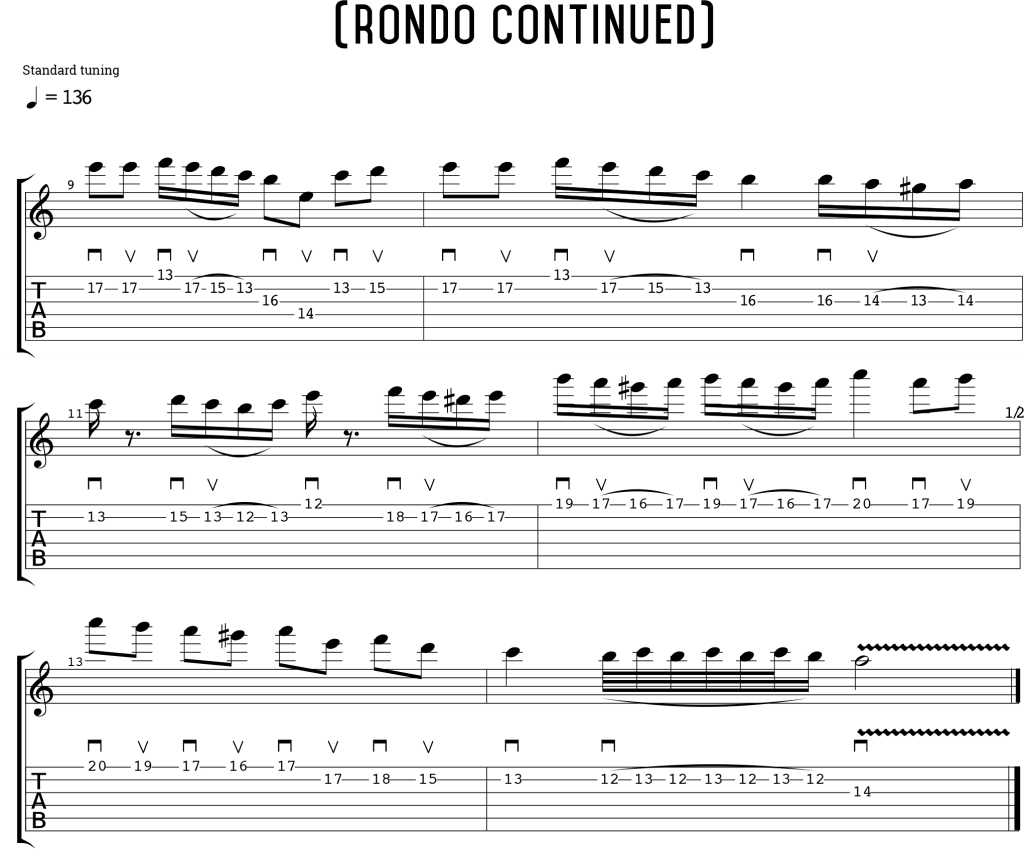![]()
Inevitably every guitarist hits a plateau or feels stuck in a rut with his or her playing. One sure way to give your playing a boost in these times is to learn something outside of your chosen musical genre and playing style. When this happens to me, I’ll dig into the vast library of classical music and find a piece that grabs my ear, then transcribe it and work out comfortable and efficient fingerings that are playable on electric guitar. In fact, my TrueFire course, Classical Concepts For Rock Guitar, uses several familiar classical tunes to help develop sweep picking, tapping, hybrid picking, pedal points and other essential techniques and concepts.
Electric guitarists have been quoting classical themes for decades. For instance, in the late ‘60’s the band Jethro Tull did a progressive rock arrangement of J.S. Bach’s “Bourree” in E minor and Procol Harum used the melody from Bach’s “Air on the G String” for their hit “A Whiter Shade of Pale.” In the ‘70’s Deep Purple’s Ritchie Blackmore and the Scorpions Uli Roth raised the bar by incorporating classical themes in their solo improvisations, but it was guitarists like Yngwie Malmsteen, Randy Rhodes, Jason Becker, Marty Friedman, Paul Gilbert, Vinnie Moore, and Tony Macalpine in the ‘80’s who pushed the envelope through the roof, defining a new genre called “Neo- Classical.” Today bands like Symphony X and Trans Siberian Orchestra carry on the tradition.
For this lesson I’ve chosen an excerpt from “Rondo” by Mozart (not included on my Classical Concepts For Rock Guitar course). Rondo is a lively piece originally written for piano and this version features the right hand part arranged for electric guitar. I give this piece to my students to work on their alternate picking, hammerons, and pull-offs. It’s also a great study using the harmonic minor scale in the key of A.
In this tune we’ll explore an efficient way of playing fast sixteenth notes by combining alternate picking with hammer-ons and pull-offs (the first five notes illustrate this basic concept). The tricky “grace notes” in bars 4-6 are played very fast using hammer-ons with the middle and pinkie fingers, and played just ahead of the beat so that the 19th fret note lands square on the down of beat “one.” For the super fast trill in the final bar you’ll need to rapidly hammer-on and pull-off with index and middle fingers as fast and evenly as possible for one beat before resolving to the final “A.”
Practice tip – break down the tune into small chunks and learn one at a time, then begin connecting the sections. Start by connecting the first two chunks and work on developing a smooth transition. You may have to rehearse this move fifty times or more before you see results. Do not add a third section until the first two can be performed flawlessly! And one more thing…practice this with a metronome at a slow enough tempo to ensure accuracy and clarity for all notes. Until next time, keep those fingers flying!
Are you thirsty for more? Check out Niccolo Paganini’s “24 Caprices” for violin, J.S. Bach’s “Works For Violin,” “The Well-Tempered Clavier” for piano, and “Two-Part Inventions” for piano. These recommendations contain a wealth of music that can be adapted for guitar and are great for working on sight-reading music.
“Canon” by Pachelbel “Flight of the Bumblebee”
“Toccata and Fugue”
Download Lesson Assets Here >>
Learn from Dave Celentano at TrueFire>>







